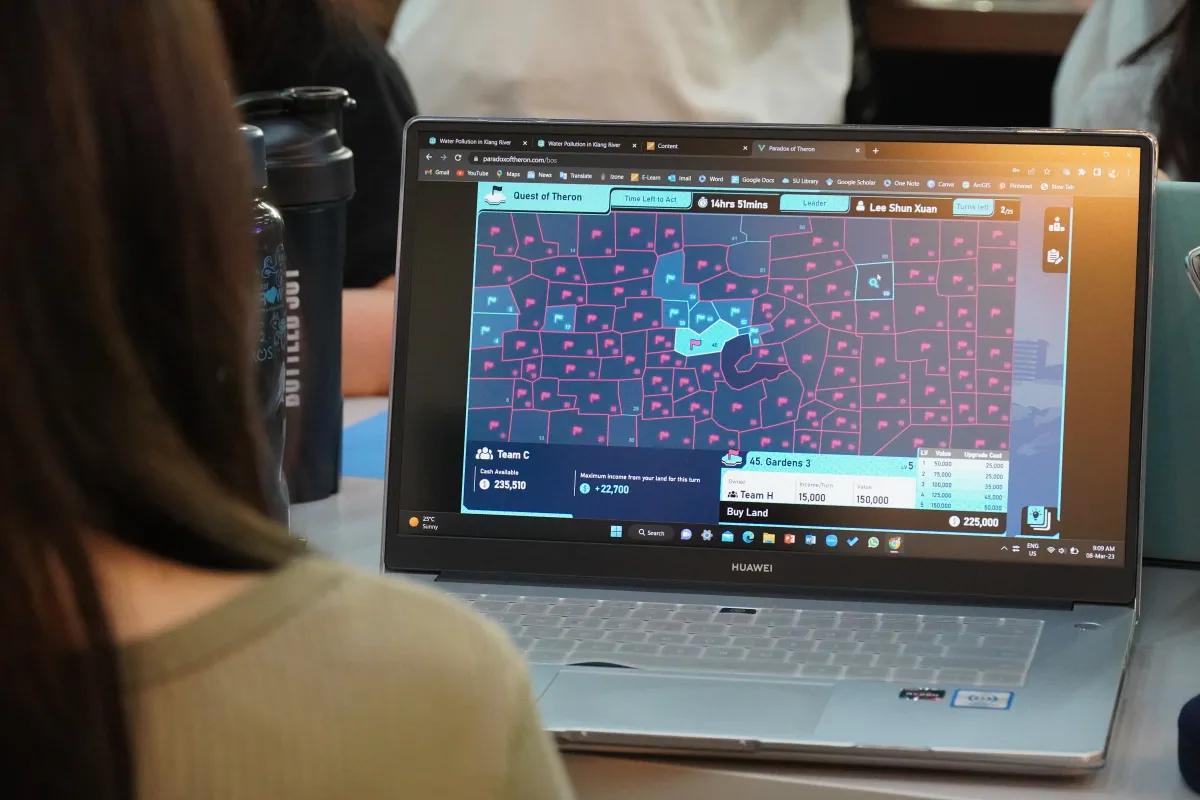Game-based Learning
The concept of lifelong learning is common in academic discourse. The acquisition of knowledge is a continuous process for learners. It is also important to note that the outcome of learning is not merely based on the ability of students to perform well in examinations and projects assigned to them. These assessment methods may not necessarily fully justify the learning outcomes achieved by students. According to most scholars, creativity, problem-solving, leadership, critical thinking, and collaborative and cooperative communication skills are needed to provide a holistic understanding of learning outcomes.
Game-based learning can be an effective method for students to acquire such skills to understand the subject matter better. After the COVID-19 pandemic, teaching and learning activities have embraced technological-based activities and platforms, especially at the tertiary level. For the majority of the courses offered, assessments are technology-driven. However, technology-based learning may not guarantee comprehensive learning outcomes since it may not encompass learning taxonomies holistically, including cognitive, affective, and psychomotor skills.
The biggest challenge in implementing game-based learning is the complexity of integrating these skills into the teaching process, particularly when related to computer-generated games. Game-based learning may not necessarily require computer software or the Internet of Things. A training session utilising simple sports equipment such as tennis balls can demonstrate effective game-based teaching and learning in a classroom.
Here is how this game can be carried out in the session: A clear briefing must be provided with specific learning objectives and outcomes for the participants (students). The learning objectives and learning outcomes can be linked with industry-related performance. Several tennis balls can be used to play the game. The participants (students) can be divided into groups. To add fun and excitement, these groups are instructed to compete within a specified timeframe. Seated in a circle, each participant must throw a ball at their group member seated opposite. Every member in the group must pass the ball to the opposite partner, and the last participant will have to throw the ball in reverse until the first thrower receives it.
A timer is set to measure the time until the first thrower gets the ball. The game's timing is measured by how long the ball is circulated. The trainer kept track of time and announced to the participants how long the group had taken to complete the game. The game can be repeated for several rounds by varying the number and sizes of balls being passed around or by specifying a timeframe for the ball to circulate. This can illustrate, for example, the importance of responding to multiple tasks of different difficulty levels.
As the participants become more familiar with the task, the trainer could gradually decrease the timeframe while considering the feasibility of completing the task. After each session, the participants can discuss and set a strategy to meet the time set. The group meeting the last round's time restriction will be the winner. At the end of the game, the trainer could deliberate with the students to reflect on what they have learned from the game.
This simple game-based learning can be integrated with theoretical concepts on communication strategies, leadership styles, motivation needs, and critical thinking skills. The learning content from the game demonstrates the cognitive learning taxonomies, where students learn to apply management skills such as planning, organising, leading, and controlling. The affective taxonomies display a positive attitude and behaviour, encourage willing participation, and provide emotional support for each group member. Meanwhile, psychomotor taxonomies are applied to observing, listening, communicating, and physically coordinating in game-based learning, as the game requires participants to join a physical activity.
Game-based learning may not be as sophisticated as Internet or web-based learning. It is a simple game where the trainer effectively executes it and maintains enthusiasm throughout the teaching and learning process to achieve desired learning outcomes.
Dr Elangkovan Narayanan Alagas
School of Hospitality and Service Management
Email: @email




